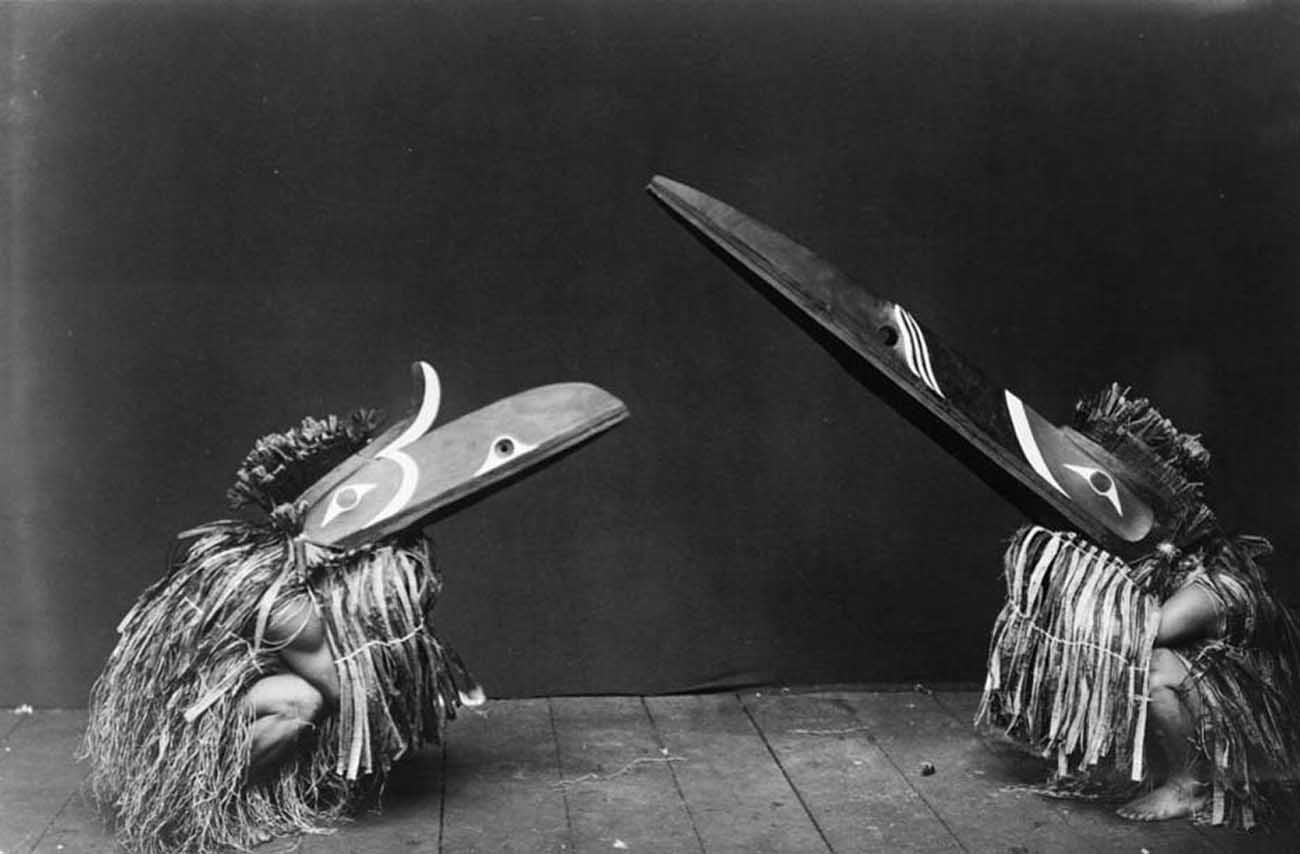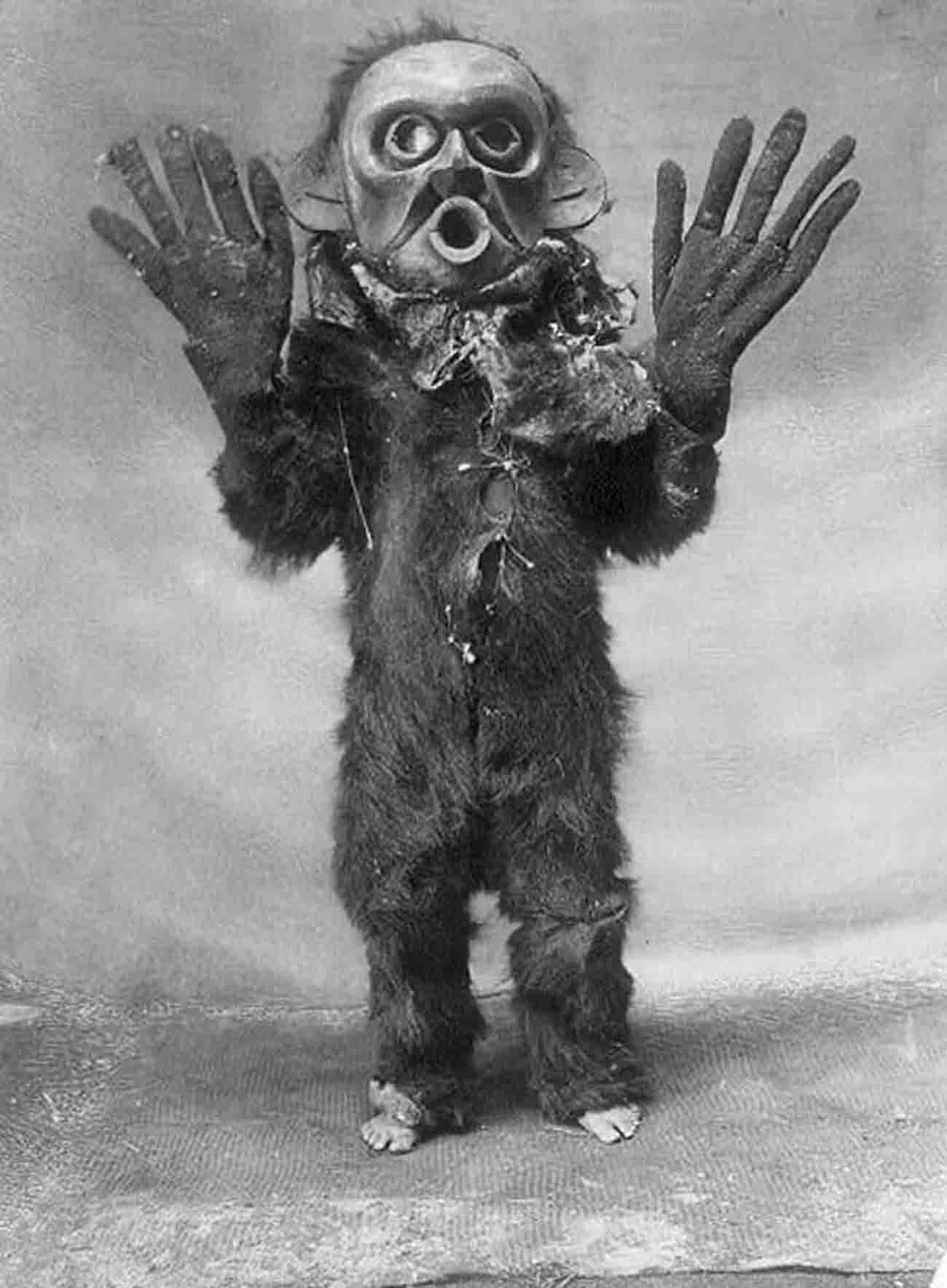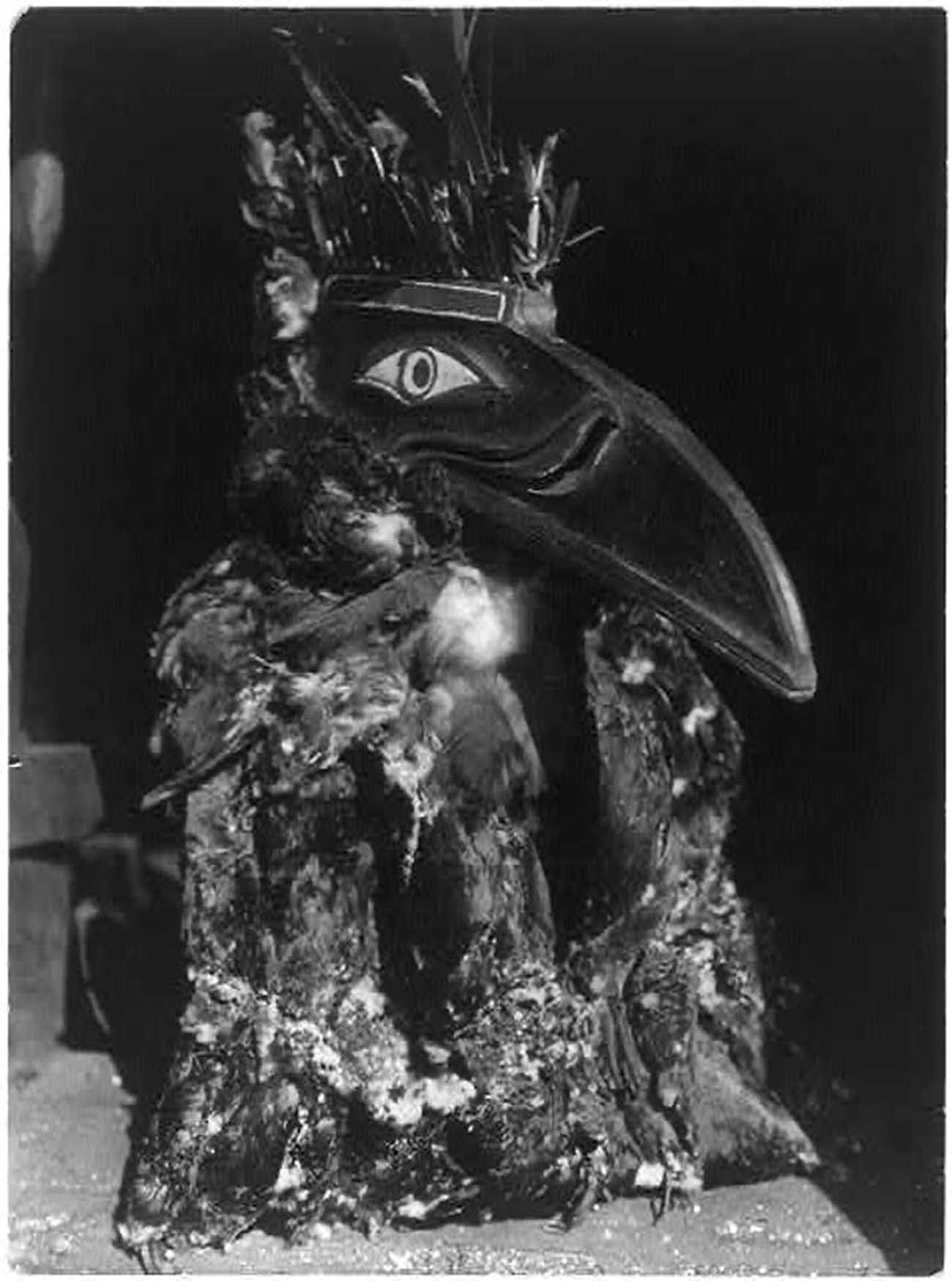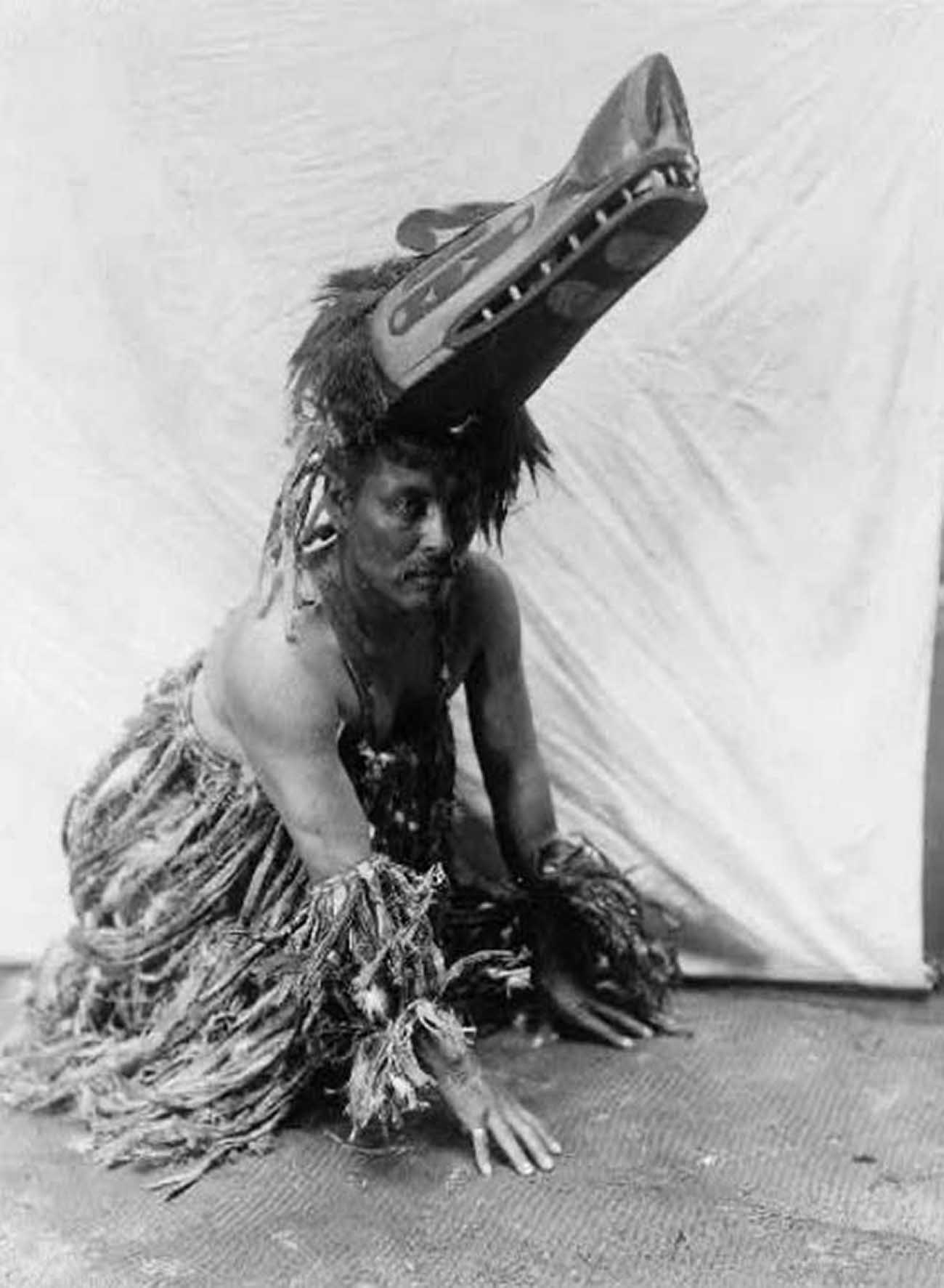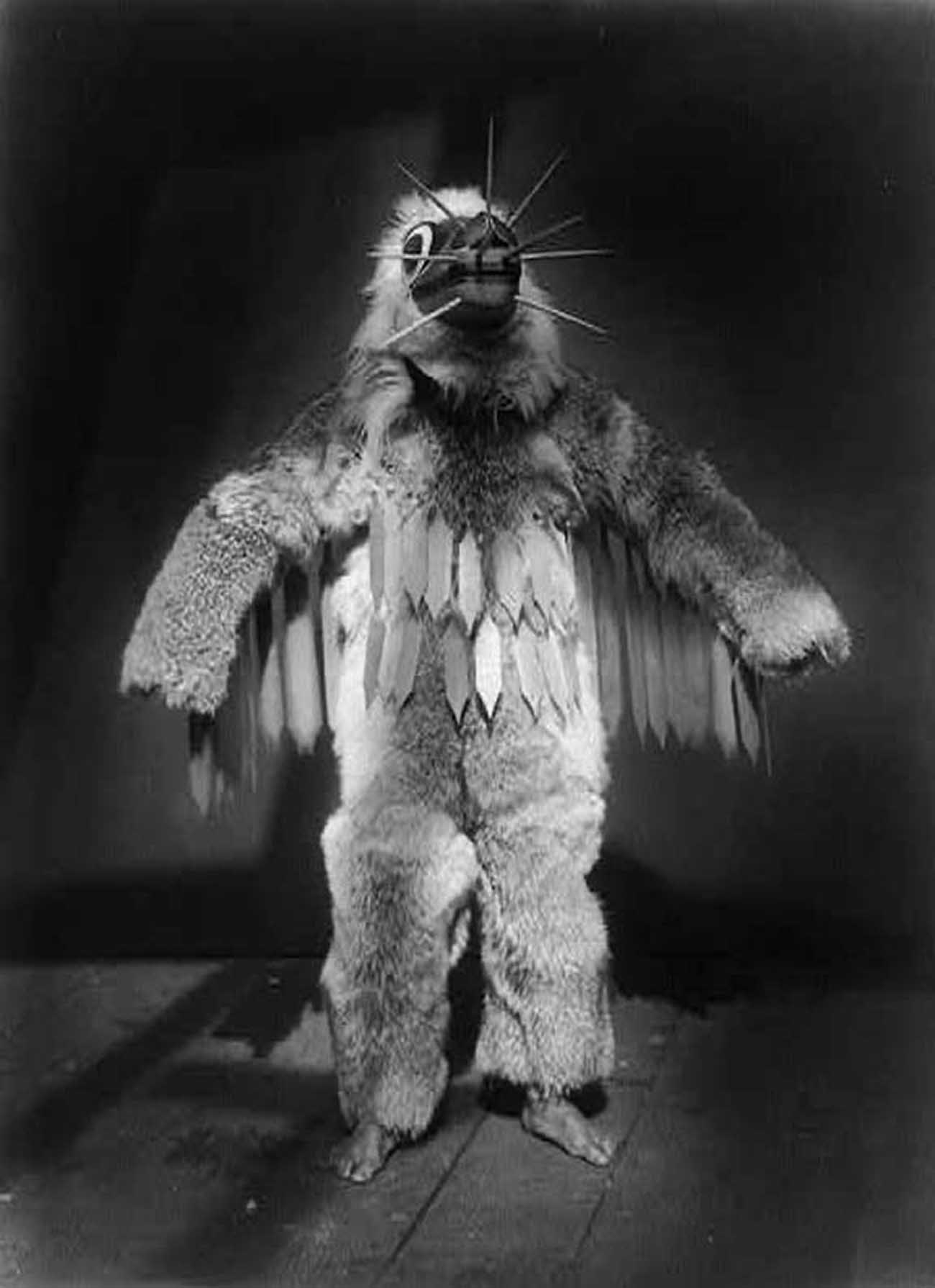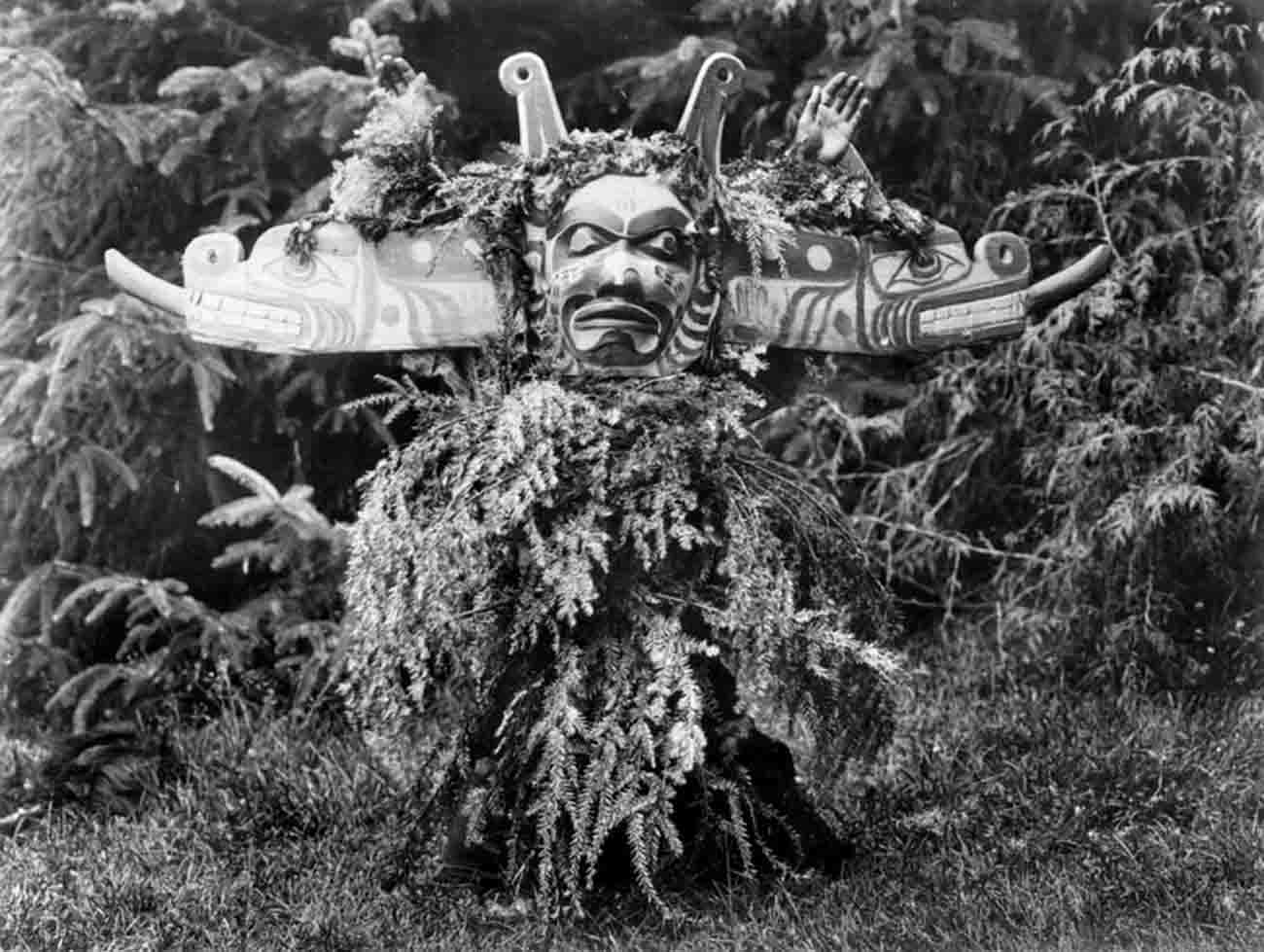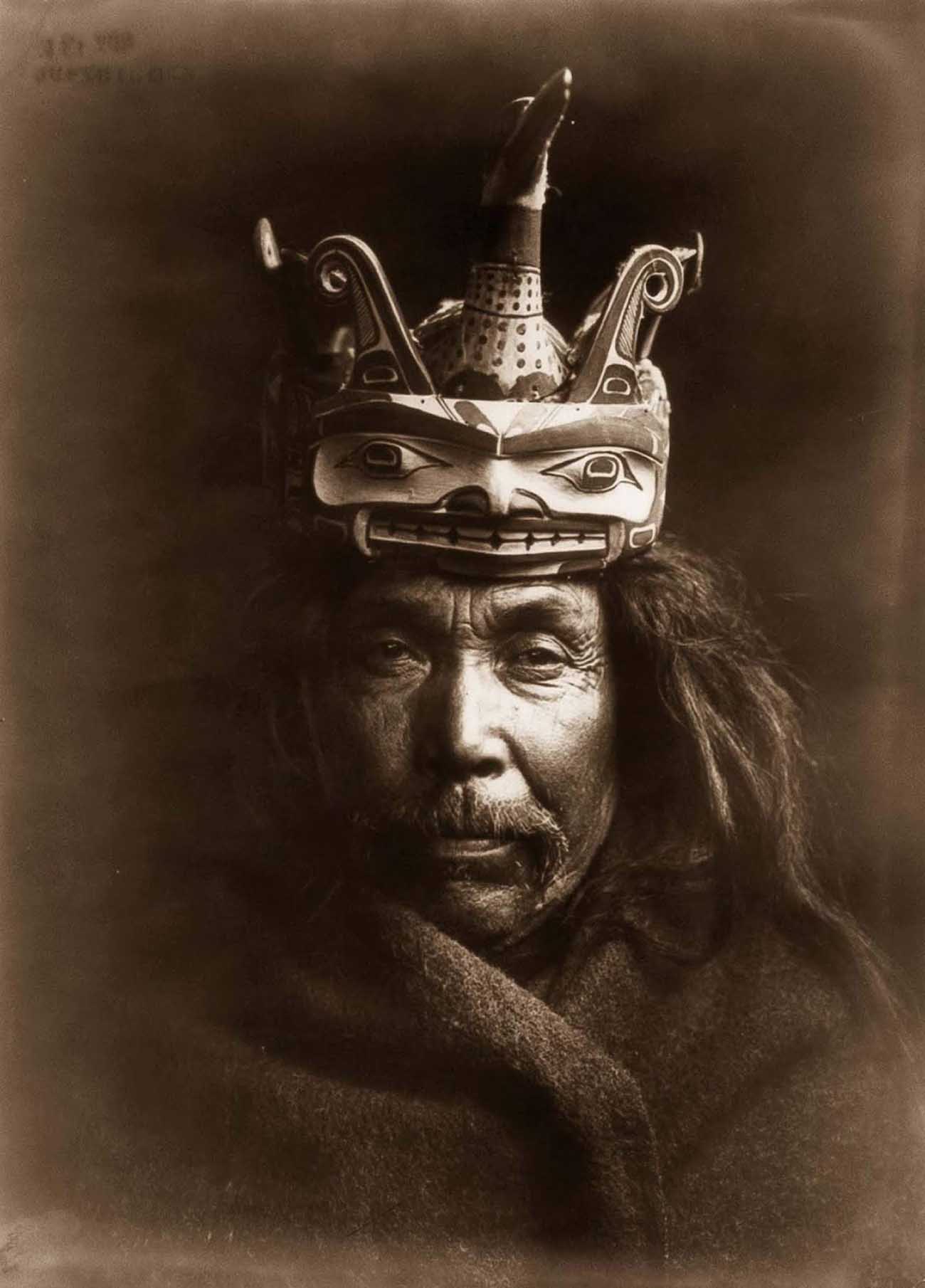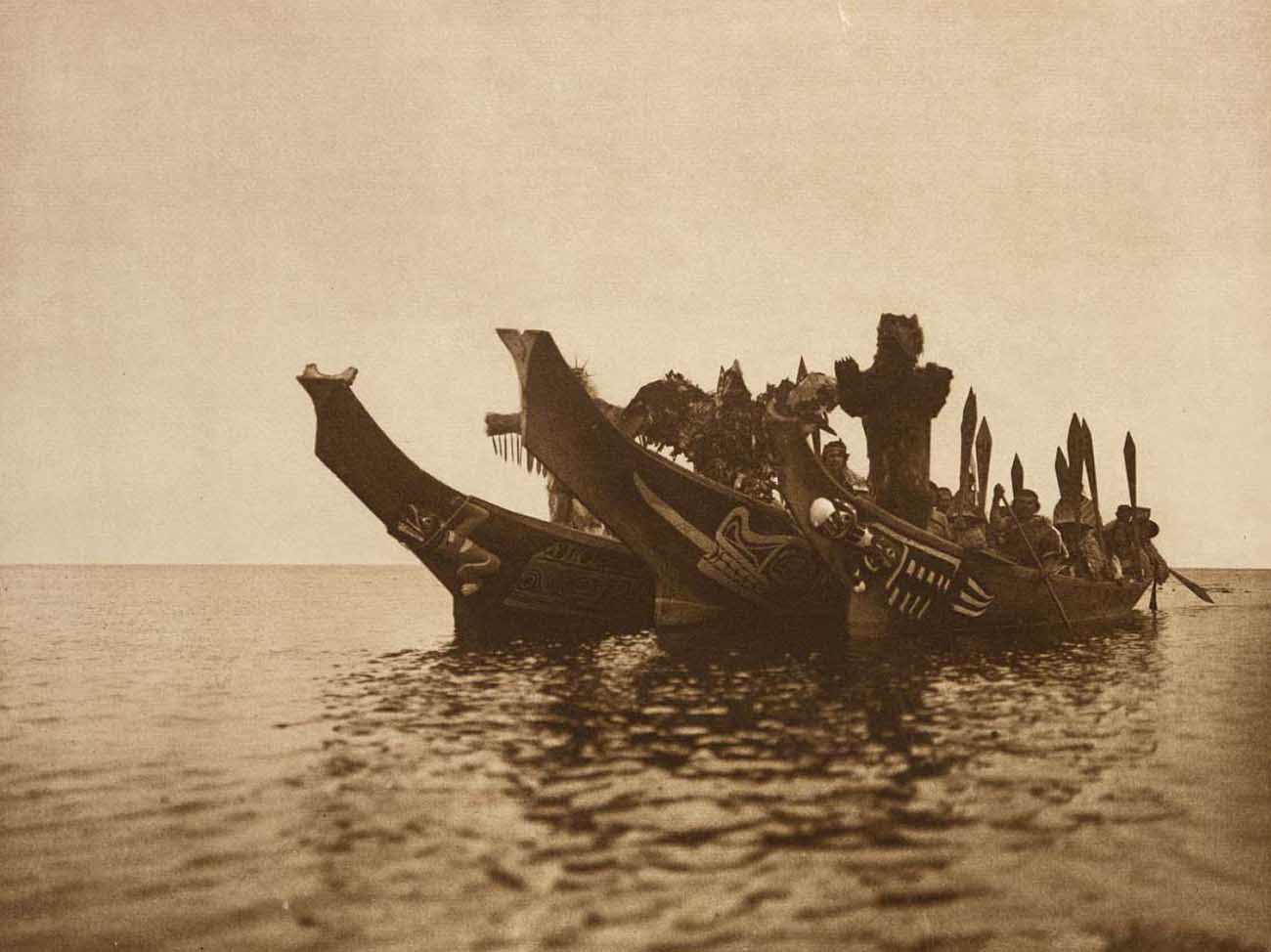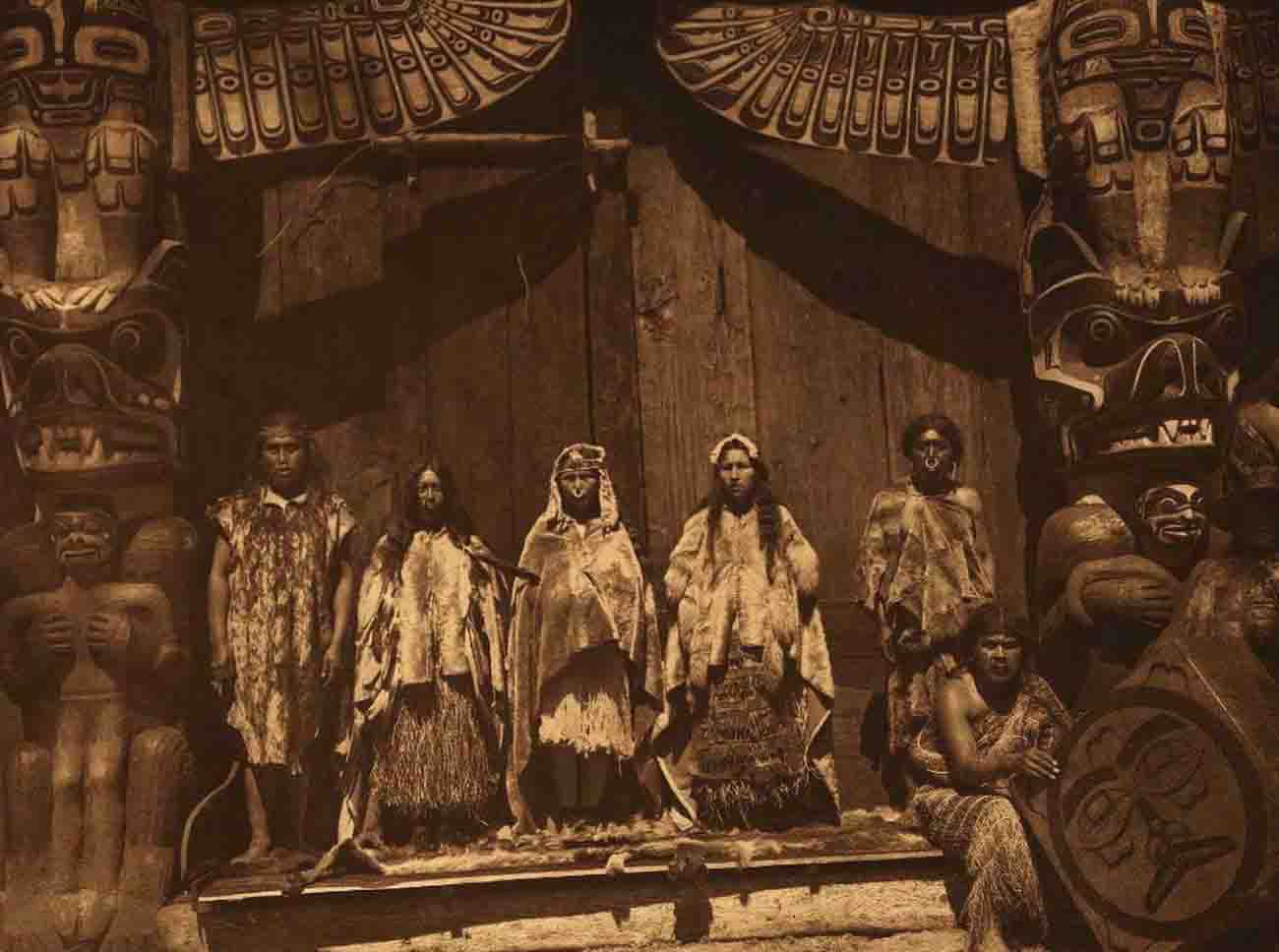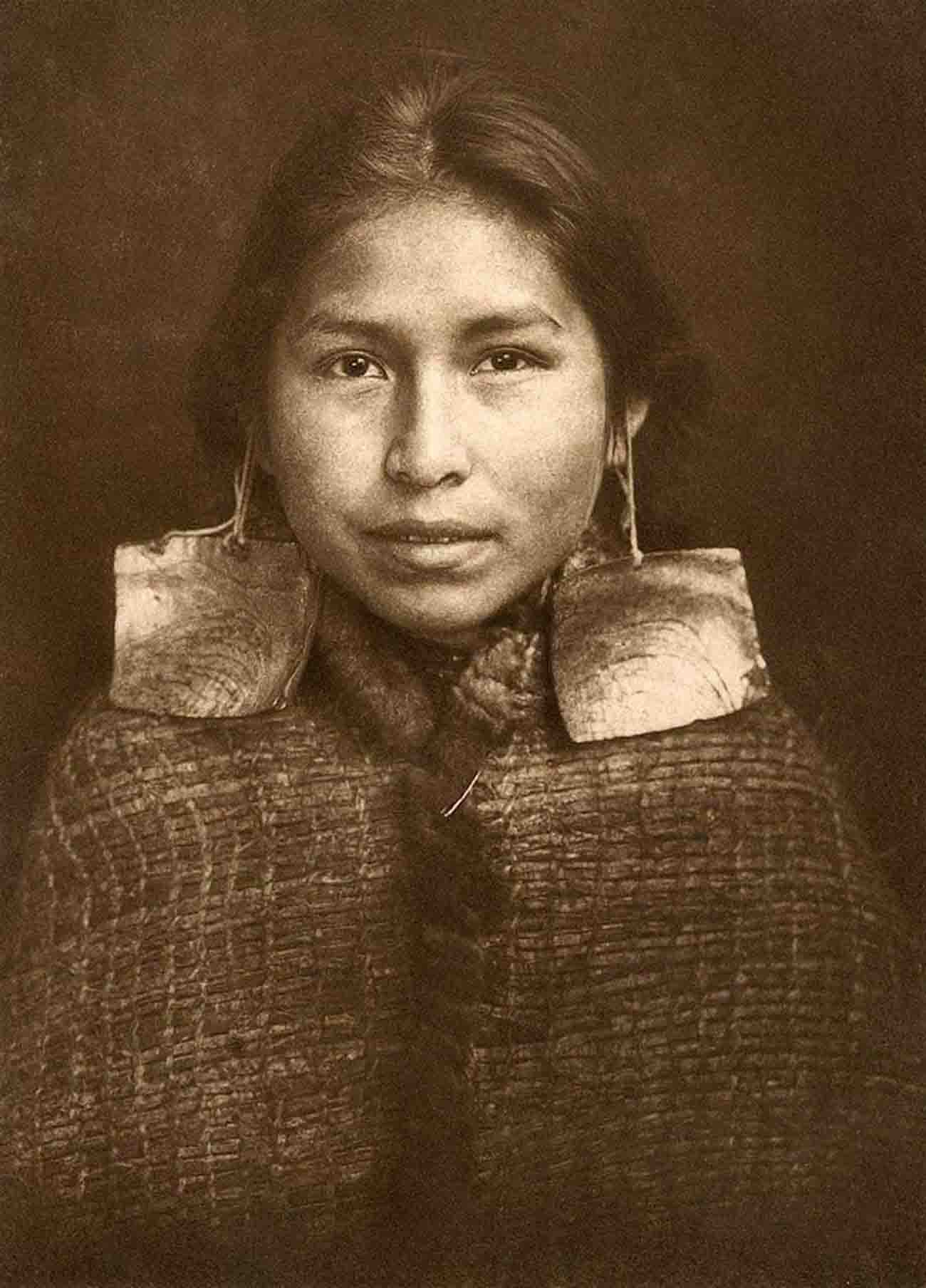Originally made up of about 28 communities speaking dialects of Kwak’wala — the Kwakwaka’wakw language — some groups died out or joined others, cutting the number of communities approximately in half. After sustained contact beginning in the late 18th century, Europeans applied the name of one band, the Kwakiutl, to the whole group, a tradition that persists. Archaeological evidence shows habitation in the Kwak’wala-speaking area for at least 8,000 years. Before contact with Europeans, Kwakwaka’wakw fished, hunted, and gathered according to the seasons, securing an abundance of preservable food. Consequently, this allowed them to return to their winter villages for several months of intensive ceremonial and artistic activity. The photographs of the ceremonial dress and masks of the Kwakwaka’wakw presented here are the creation of American photographer and ethnologist Edward Curtis (1868–1952), famous for his work with Native American people. The first documented contact with Westerners was in 1792 during the expedition led by English officer Captain George Vancouver and was soon followed by colonies of Europeans settling on Canada’s West Coast. As was often the way, with settlers came disease and the Kwakwaka’wakw population dropped by up to 75% between 1830 and 1880. Kwakwa̱ka̱ʼwakw oral history says their ancestors (ʼnaʼmima) came in the forms of animals by way of land, sea, or underground. When one of these ancestral animals arrived at a given spot, it discarded its animal appearance and became human. Animals that figure in these origin myths include the Thunderbird, his brother Kolas, the seagull, orca, grizzly bear, or chief ghost. Some ancestors have human origins and are said to come from distant places. Ornate weaving and woodwork were important crafts, and wealth, defined by slaves and material goods, was prominently displayed and traded at potlatch ceremonies. These customs were the subject of extensive study by the anthropologist Franz Boas. In contrast to most non-native societies, wealth and status were not determined by how much you had, but by how much you had to give away. This act of giving away your wealth was one of the main acts in a potlatch. The potlatch culture of the Northwest is well known and widely studied. It is still practiced among the Kwakwa̱ka̱ʼwakw, as is the lavish artwork for which they and their neighbors are so renowned. The phenomenon of the potlatch, and the vibrant societies and cultures associated with it, can be found in Chiefly Feasts: The Enduring Kwakiutl Potlatch, which details the incredible artwork and legendary material that go with the other aspects of the potlatch, and gives a glimpse into the high politics and great wealth and power of the Kwakwa̱ka̱ʼwakw chiefs. When the Canadian government was focused on the assimilation of First Nations, it made the potlatch a target of activities to be suppressed. Missionary William Duncan wrote in 1875 that the potlatch was “by far the most formidable of all obstacles in the way of Indians becoming Christians, or even civilized”. In 1885, the Indian Act was revised to include clauses banning the potlatch and making it illegal to practice. Eventually, the Act was amended, expanded to prohibit guests from participating in the potlatch ceremony. The Kwakwa̱ka̱ʼwakw were too numerous to police, and the government could not enforce the law. Kwakwakaʼwakw arts consist of a diverse range of crafts, including totems, masks, textiles, jewelry, and carved objects, ranging in size from transformation masks to 40 ft (12 m) tall totem poles. Cedar wood was the preferred medium for sculpting and carving projects as it was readily available in the native Kwakwa̱ka̱ʼwakw regions. Totems were carved with bold cuts, a relative degree of realism, and emphatic use of paints. Masks make up a large portion of Kwakwa̱ka̱ʼwakw art, as masks are important in the portrayal of the characters central to Kwakwa̱ka̱ʼwakw dance ceremonies.
(Photo credit: Edward Curtis / Library of Congress / Wikimedia Commons). Notify me of new posts by email.
Δ Subscribe
